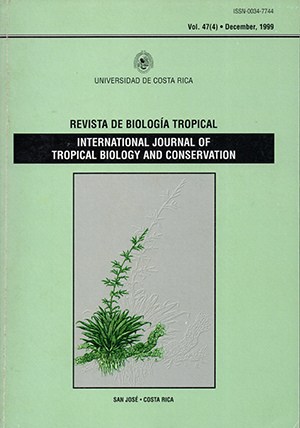Abstract
Bat colonies were sampled in the city of Rosario to increase the understanding of bat ecology in urban areas of the southem cone of South America. Seven species were recorded, of which three are new records for Rosario. One representative colony was chosen for intensive ecological study. ApproximateJy 64 000 Tadarida brasiJiensis forrned a matemity colony in the attic of an old building. Most of the bats were pregnant or lactating females and their young .. Adults arrive in the colony in mid-September and ¡eave in February, no bats were present at tbis site from the beginning of March to mid-September. Births occur between mid-November and mid-December. Pups roosted in compact c1usters in the nursery areas, spatially segregated from adults. Densities of these aggregations were 643 ± 76 bats/m2 (p < 0.20). and adult densitíes were 161 ± 21 bats/m2 (p < 0.20). 182 bats were captured. They were sexed and weighed. Mean adult females mass was, 13.26g before parturition and 12.01g after parturition. Recorded data inc1uded daily activity pattems .. Barn Owls (Tyto alba) and domestic cats prey on bats leaving the colony. Rabies virus was no! detected. The insect biological control exerted by this colony was estimated and it would be of 209 to 385 kg of insects nightly between September and late February, demonstrating the important role they play in the urban ecosistem.

This work is licensed under a Creative Commons Attribution 4.0 International License.
Copyright (c) 1999 Revista de Biología Tropical

